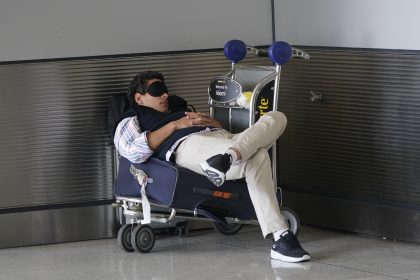Study Offers Insight Into Devastating Childhood Battery Injuries

SILVER SPRING, Md. — Despite efforts at prevention, the number of children aged 5 and younger who are taken to emergency rooms after ingesting or inserting batteries is continuing to rise, according to a recent study.
The study was conducted by Safe Kids Worldwide, a nonprofit dedicated to preventing childhood injuries.
Its findings were published in the September issue of Pediatrics, the journal of the American Academy of Pediatrics.
For the purpose of the study, the researchers looked at data compiled by the Consumer Product Safety Commission’s National Electronic Injury Surveillance System.
What they discovered was that for the study period, which extended from 2010 to 2019, there were approximately 70,322 battery-related emergency room visits annually among children aged 18 and younger, with the emergency room visit rate being highest among children aged 5 and younger (24.5 per 100,000 children annually) compared to those aged 6-17 (2.2 per 100,000 children).
The mean age of patients was 3.2 years and the overwhelming majority of the emergency room visits — 90% — were attributed to the child swallowing a battery or batteries.
Roughly 6% were due to nasal insertions, 3% were attributed to ear insertions and 2% were due to some form of mouth exposure.
Button batteries, small discs that range from 5 mm to 25 mm in diameter and which are typically used to power toys, hearing aids and remote controls were implicated in 85% of visits where battery type was described.
The researchers note that the behavior behind the incidents is completely normal and to be expected.
Young children use their senses to explore their environments and often put objects into their mouths, ear canals or nasal passages.
As toddlers become increasingly mobile and curious, their risk of foreign body ingestion increases, but the prevalence of emergency room visits and the damage caused by button batteries is still worrisome, they said.
In 2019, foreign body ingestion was the fourth leading cause for calls to poison control centers for children aged 5 years and younger in the United States, and previous studies have identified batteries, when ingested, as important sources of serious injury and death among young children.
“Although larger lithium cells present greater risks of lodging in the esophagus, smaller 1.5 voltage, nonlithium [button batteries] can also cause severe or life-threatening esophageal injuries, especially for children less than one year of age,” the study said.
“The electrical current generated by the button battery in contact with tissue leads to rapid hydrolysis of water into hydroxide ions (highly alkaline pH) and resultant liquefactive necrosis,” it continued. “Unfortunately, liquefactive necrosis can progress even after the battery is removed, leading to delayed complications.
“Nasal [button battery] insertion can also cause complications including nasal septal perforation and periorbital cellulitis, and ear canal insertion can lead to tympanic membrane perforation, hearing loss, and facial nerve paralysis,” it added.
The researchers conclude that because prevention efforts have not significantly reduced injury rates, regulatory efforts are needed.
Ultimately, however, the researchers concluded hazard reduction or elimination through safer button battery design is critical and should be adopted by the battery industry.
Eden can be reached at [email protected]

























